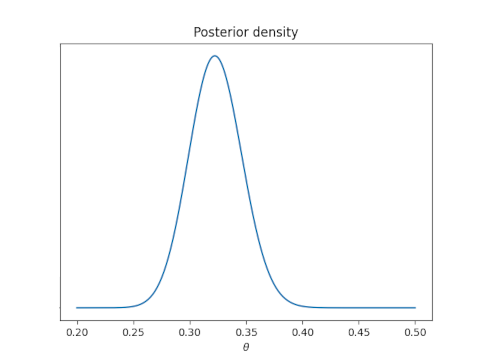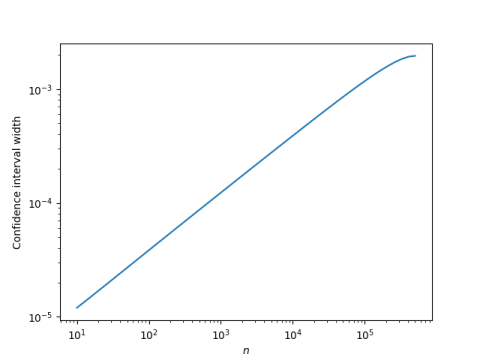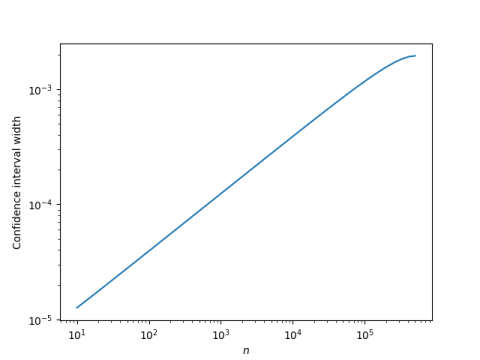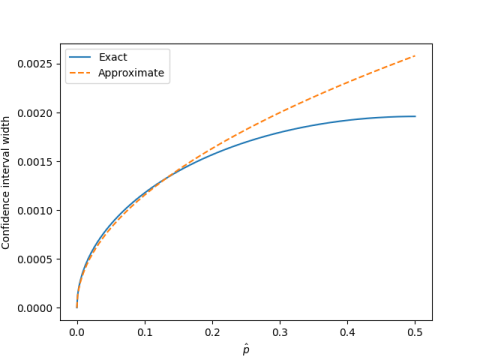Suppose you design an experiment, an A/B test of two page designs, randomizing visitors to Design A or Design B. You planned to run the test for 800 visitors and you calculated some confidence level α for your experiment.
You decide to take a peek at the data after only 300 randomizations, even though your statistician warned you in no uncertain terms not to do that. Something about alpha spending.
You can’t unsee what you’ve seen. Now what?
Common sense says it matters what you saw. If 148 people were randomized to Design A, and every single one of them bought your product, while 10 out of the 152 people randomized to Design B bought your product, common sense says you should call Design A the winner and push it into production ASAP.
But what if you saw somewhat better results for Design A? You can have some confidence that Design A is better, though not as much as the nominal confidence level of the full experiment. This is what your (frequentist) statistician was trying to protect you from.
When your statistician designed your experiment, he obviously didn’t know what data you’d see, so he designed a process that would be reliable in a certain sense. When you looked at the data early, you violated the process, and so now your actual practice no longer has the probability of success initially calculated.
But you don’t care about the process; you want to know whether to deploy Design A or Design B. And you saw the data that you saw. Particularly in the case where the results were lopsidedly in favor of Design A, your gut tells you that you know what to do next. You might reasonably say “I get what you’re saying about repeated experiments and all that. (OK, not really, but let’s say I do.) But look what happened? Design A is a runaway success!”
In formal terms, your common sense is telling you to condition on the observed data. If you’ve never studied Bayesian statistics you may not know exactly what that means and how to calculate it, but it’s intuitively what you’ve done. You’re making a decision based on what you actually saw, not on the basis of a hypothetical sequence of experiments you didn’t run and won’t run.
Bayesian statistics does formally what your intuition does informally. This is important because even though your intuition is a good guide in extreme cases, it can go wrong when things are less obvious. As I wrote about recently, smart people can get probability very wrong, even when their intuition is correct in some instances.
If you’d like help designing experiments or understanding their results, we can help.








